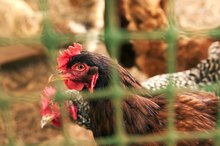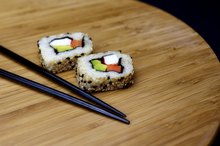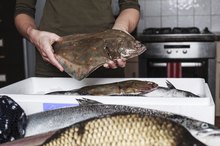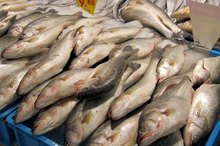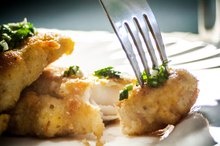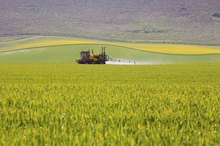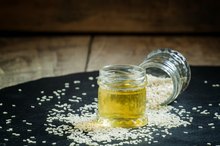What does fact checked mean?
At Healthfully, we strive to deliver objective content that is accurate and up-to-date. Our team periodically reviews articles in order to ensure content quality. The sources cited below consist of evidence from peer-reviewed journals, prominent medical organizations, academic associations, and government data.
- Trends in Biotechnology: Haematococcus Astaxanthin: Applications for Human Health and Nutrition
- Trends in Biotechnology: Haematococcus Astaxanthin: Applications for Human Health and Nutrition
- International Microbiology: Phaffia Rhodozyma: Colorful Odyssey
- International Microbiology: Phaffia Rhodozyma: Colorful Odyssey
- Journal of AOAC International: Rapid Liquid Chromatographic Method to Distinguish Wild Salmon from Aquacultured Salmon Fed Synthetic Astaxanthin
- Journal of AOAC International: Rapid Liquid Chromatographic Method to Distinguish Wild Salmon from Aquacultured Salmon Fed Synthetic Astaxanthin
- Journal of Agricultural and Food Chemistry: Stability Studies on Astaxanthin Extracted from Fermented Shrimp Byproducts
- Journal of Agricultural and Food Chemistry: Stability Studies on Astaxanthin Extracted from Fermented Shrimp Byproducts
The information contained on this site is for informational purposes only, and should not be used as a substitute for the advice of a professional health care provider. Please check with the appropriate physician regarding health questions and concerns. Although we strive to deliver accurate and up-to-date information, no guarantee to that effect is made.
Food Sources of Astaxanthin
The pigment responsible for giving seafood and crustaceans their pink to red hue, astaxanthin acts as a powerful antioxidant. It belongs to the carotenoid nutrient family -- the same one that includes beta carotene, a source of vitamin A. Astaxanthin isn't an essential nutrient, but it can benefit your health. You'll find it in several foods, primarily of marine origin, including seafood, microalgae and yeast.
Microalgae and Yeast
The most potent naturally occurring source of astaxanthin may be Haematococcus pluvialis, a very small algae, or microalgae, found in marine environments 1. Although humans don't regularly consume it on its own, many high-dose supplements come from this microalgae. A yeast, Phaffia rhodozyma, also generates substantial amounts of astaxanthin and is used to create supplements 4.
Salmon
Organic Vs. Non-Organic Chicken
Learn More
Salmon is a potent food source of astaxanthin, ranging in content from 4 to 40 milligrams per kilogram 34. The highest concentrations can be found in Pacific salmon, relative to Atlantic salmon. Fish that have developed in the wild may also have higher concentrations than their farmed counterparts.
Other Seafood
Generally, seafood with a red to pink hue when raw or cooked may be a source of astaxanthin. For instance, although shrimp may have a greyish-blue colouring when raw, it transitions to vibrant pink when cooked.
Factors That Can Affect Astaxanthin Content
Nutrition Information For Brown Rice Sushi
Learn More
Astaxanthin, like many compounds in food, is sensitive to environmental stress 1. Long-term exposure to air and light can decrease astaxanthin concentration, as can contact with heat 1. Storage in airtight containers in dark places and minimizing cooking time may help reduce astaxanthin degradation in food 1.
Related Articles
References
- Trends in Biotechnology: Haematococcus Astaxanthin: Applications for Human Health and Nutrition
- International Microbiology: Phaffia Rhodozyma: Colorful Odyssey
- Journal of AOAC International: Rapid Liquid Chromatographic Method to Distinguish Wild Salmon from Aquacultured Salmon Fed Synthetic Astaxanthin
- Journal of Agricultural and Food Chemistry: Stability Studies on Astaxanthin Extracted from Fermented Shrimp Byproducts
- Galasso C, Corinaldesi C, Sansone C. Carotenoids from Marine Organisms: Biological Functions and Industrial Applications. Antioxidants (Basel). 2017;6(4):96. doi:10.3390/antiox6040096
- Ambati RR, Phang SM, Ravi S, Aswathanarayana RG. Astaxanthin: Sources, Extraction, Stability, Biological Activities and Its Commercial Applications—A Review. Mar Drugs. 2014;12(1):128-152. doi:10.3390/md12010128
- Gammone MA, Riccioni G, D'Orazio N. Marine Carotenoids against Oxidative Stress: Effects on Human Health. Mar Drugs. 2015;13(10):6226-6246. doi:10.3390/md13106226
- Iwamoto T, Hosoda K, Hirano R, et al. Inhibition of Low-Density Lipoprotein Oxidation by Astaxanthin. J Atheroscler Thromb. 2000;7(4):216-222. doi:10.5551/jat1994.7.216
- Kishimoto Y, Yoshida H, Kondo K. Potential Anti-Atherosclerotic Properties of Astaxanthin. Marine Drugs. 2016;14(2):35. doi:10.3390/md14020035.
- Mashhadi NS, Zakerkish M, Mohammadiasl J, Zarei M, Mohammadshahi M, Haghighizadeh MH. Astaxanthin improves glucose metabolism and reduces blood pressure in patients with type 2 diabetes mellitus. Asia Pac J Clin Nutr. 2018;27(2):341-346. doi:10.6133/apjcn.052017.11
- Khoo HE, Ng HS, Yap WS, Goh HJH, Yim HS. Nutrients for Prevention of Macular Degeneration and Eye-Related Diseases. Antioxidants (Basel). 2019;8(4):85. doi:10.3390/antiox8040085
- Parisi V, Tedeschi M, Gallinaro G, et al. Carotenoids and Antioxidants in Age-Related Maculopathy Italian Study: Multifocal Electroretinogram Modifications After 1 Year. Ophthalmology. 2008;115(2):324-333.e2. doi:10.1016/j.ophtha.2007.05.029
- Piermarocchi S, Saviano S, Parisi V, et al. Carotenoids in Age-Related Maculopathy Italian Study (CARMIS): Two-Year Results of a Randomized Study. Eur J Ophthalmol. 2012;22(2):216-225. doi:10.5301/ejo.5000069
Writer Bio
Teo Quay is a health communication enthusiast based in Ottawa, Canada. She has been studying, teaching and working in the fields of exercise physiology and nutrition since 2007. Teo received a master's degree in human nutrition from the University of British Columbia.
